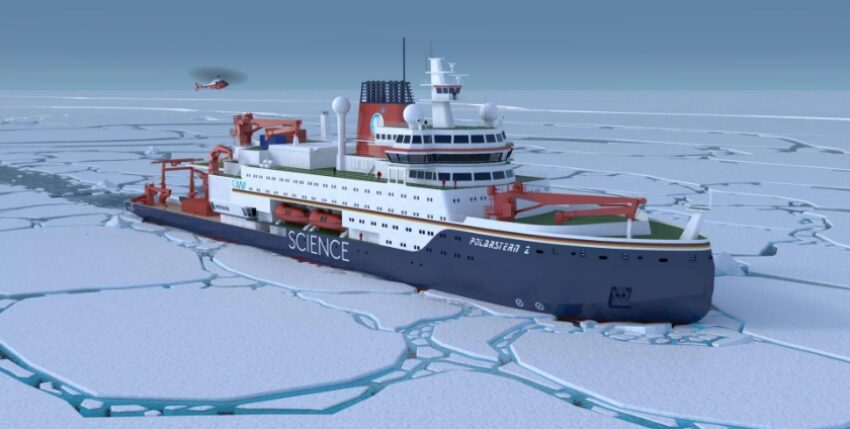The order volume includes generator sets, propulsion units and systems such as methanol treatment and exhaust gas aftertreatment.
In September 2025, TKMS signed contracts with three suppliers to procure the propulsion technology for the new Polarstern on behalf of the Alfred Wegener Institute. The aim is to utilise technologies that enable particularly low-noise and low-emission research at sea and in the polar regions. CEO Oliver Burkhard emphasised the importance for TKMS: "By selecting the complex propulsion system for the new Polarstern, we are ensuring that we meet the high customer requirements for reliability, environmental protection and sustainability."
Drive technology for sustainable and emission-free research Four generator sets from Wärtsilä were selected for power generation. Two of the engines are dual-fuel-capable, meaning that they can run on methanol as well as conventional diesel. In addition to a sustainable energy supply, a complex battery system will be integrated into the new Polarstern to enable completely emission-free research operations. A highly effective diesel particulate filter cleans the exhaust gases produced during diesel operation before they are treated in an SCR catalytic converter from Wärtsilä. Two rudder propellers from Finnish company Steerprop and a fixed centre propulsion system from Finnish manufacturer Aker Arctic are used for propulsion. The entire propulsion system is designed to fulfil the highest climate and environmental protection requirements. The Polarstern is scheduled to be handed over to the Alfred Wegener Institute research community in 2030.
Technical data on the drive system
-
Overall performance: W31 four-stroke generator sets - 33.1 MWe
-
Storage capacity battery system (correction): An approx. 17,800 kWh battery system enables emission-free measurements without fuel consumption for 2 - 3 hours
-
SCR catalytic converter (selective catalytic reduction): Conversion of up to 90 % of climate-damaging nitrogen oxide emissions into elemental nitrogen and water
-
Diameter rudder propeller (azimuth propulsors SP 160 PULL ARC LM): 4,8 m
-
Centre propeller diameter: 5,4 m











3 responses
Yes, the changes (with the 17,800 kWh battery systems) are now of a useful size.
But I'm still puzzled as to how they came up with 12.4 kWh, 17.8 kWh would be understandable for me, but 12.4 kWh is a very strange battery size for a ship.
Erm, how do you arrive at a storage capacity of approx. 12.4 kWh for the battery system?
The traction battery of an electric car already has an energy content of approx. 40 to 60 kWh, 12.4 kWh is very, very little for a ship.
The question I ask myself is, where do these 12.4 kWh come from?
As a drive, 12.4 kWh is only enough for a small e-jet ski at most, marine diesel engines usually use a compressed air system for starting, so I would guess a UPS system (uninterruptible power supply); for example for the radio system, possibly for the control voltage (24V DC) ship electronics (engine, PLC, control system, etc.), for server racks 12.4 kWh is actually too little again.
So where does this 12.4 kWh storage capacity of a battery system come from?
Paper from the Alfred Wegener Institute (AWI):
An approx. 17,800 kWh battery system enables
emission-free measurements without fuel consumption for 2-3 h.
Lecture on the YouTube channel Science for the Living Room:
"The new Polarstern - A ship like no other" from min. 25:30 onwards, approx. 16 kWh battery system capacity is mentioned.
Moin, read carefully....Thank you. Not us, because we took over the PM. We'll do some more research.
Have a nice Sunday!